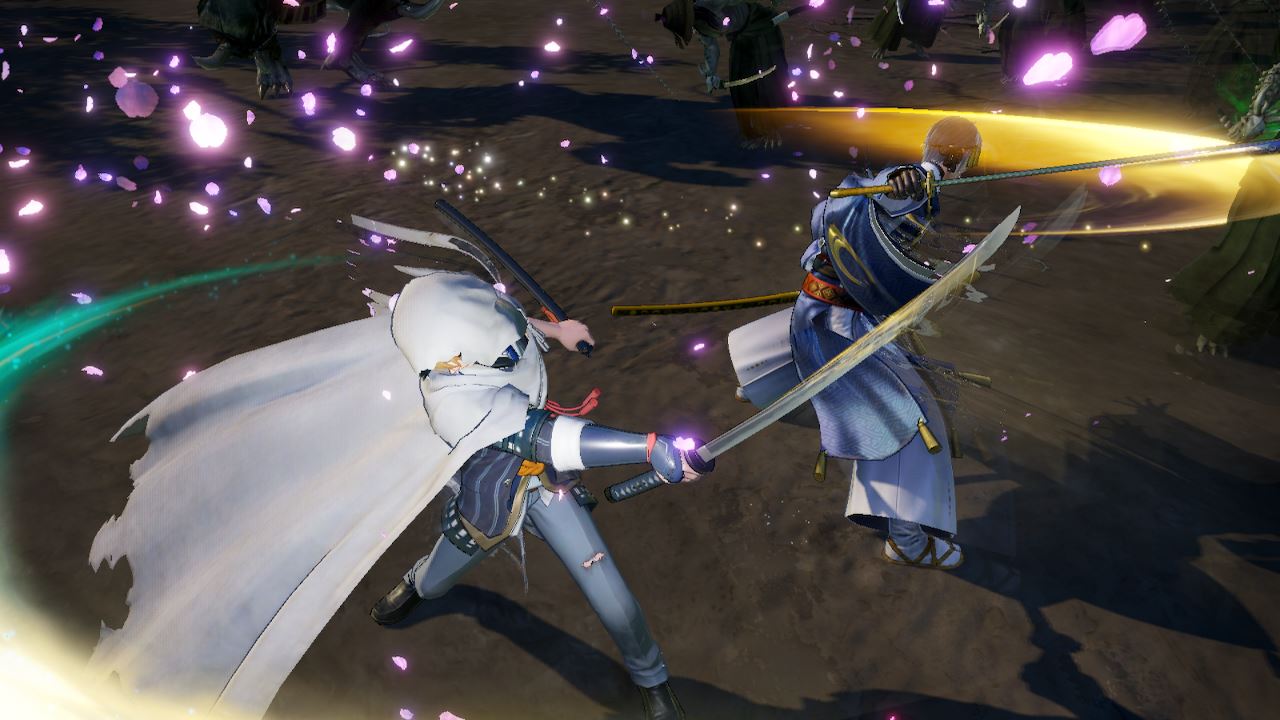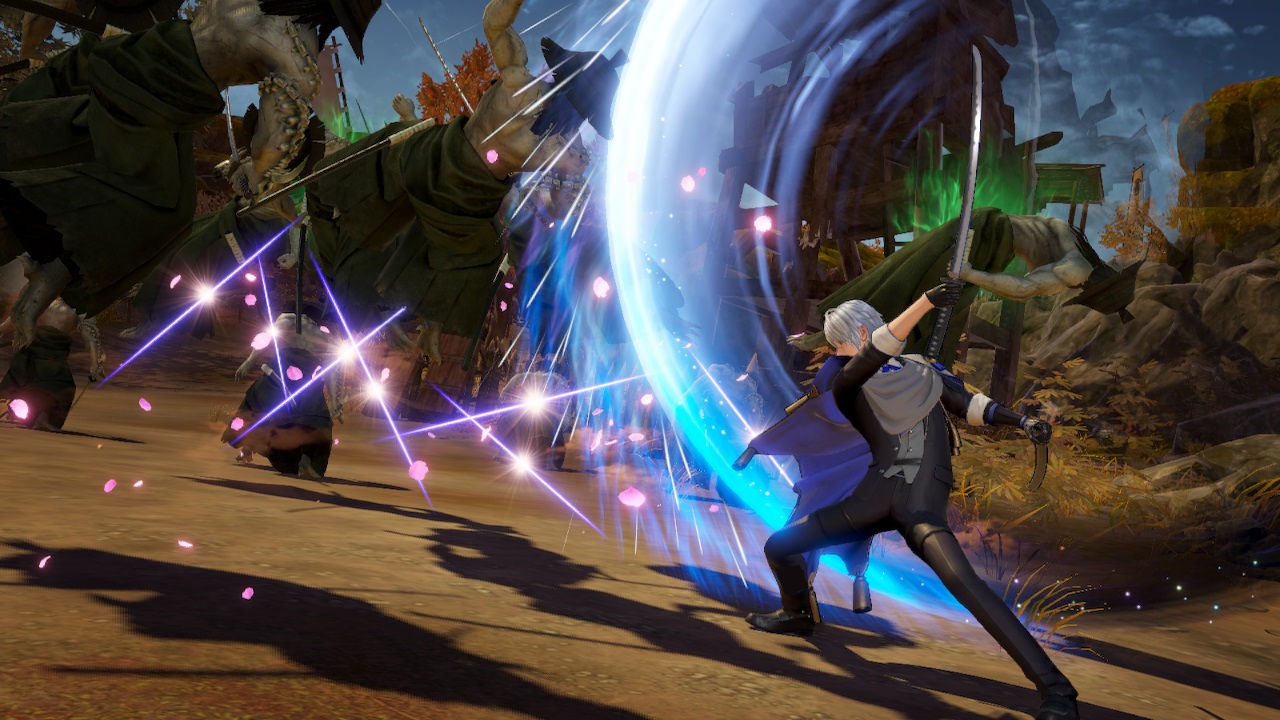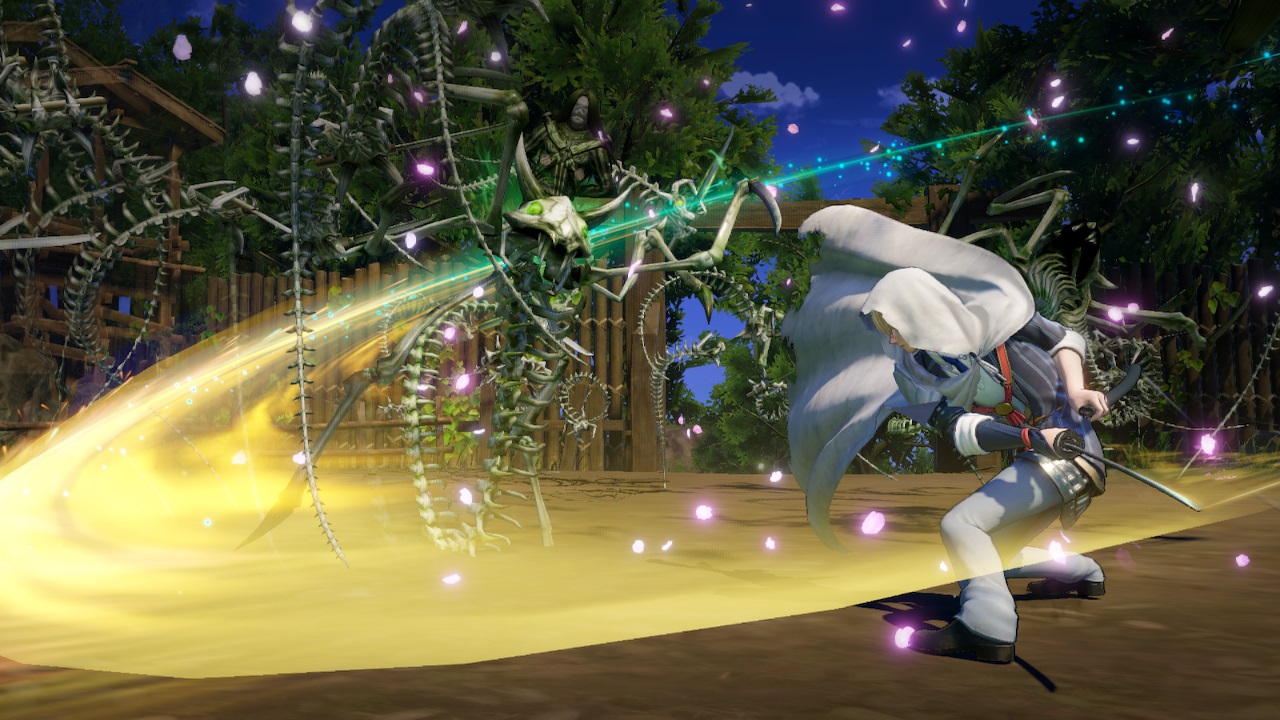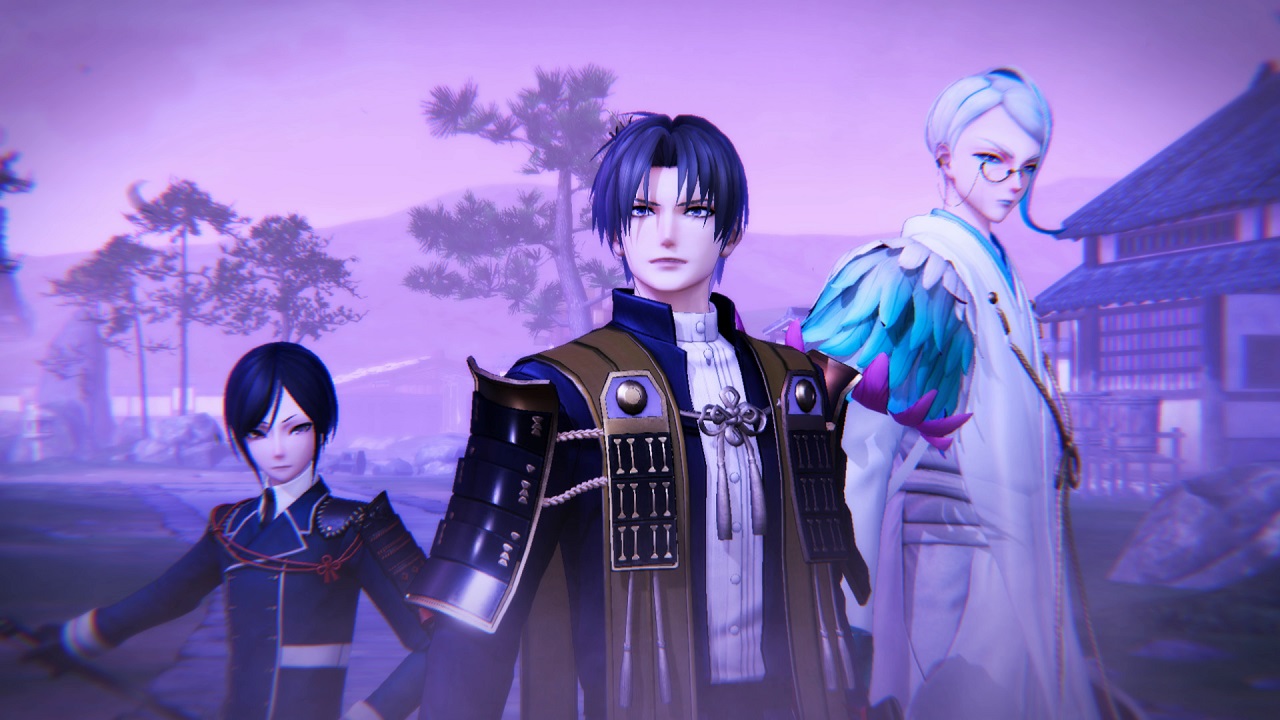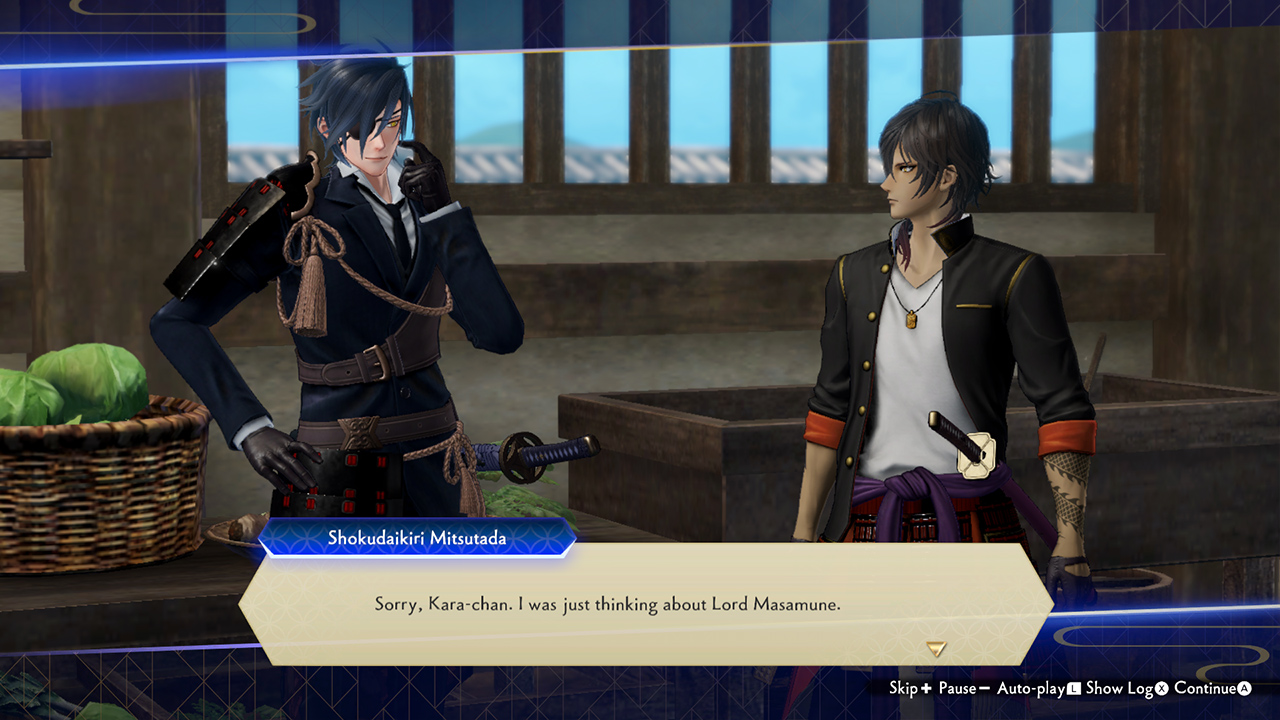Boys keep swinging.
Every time I’m introduced to a time travel plotline like in Touken Ranbu Warriors, I think back to Godzilla vs. King Ghidorah. In that movie, Futurians (from the future, you see) stop in 1990s Japan to ask permission to go back to the Marshall Islands in the 1940s to prevent Godzilla’s creation. Permission granted, they’re successful. But when a new monster is then freed to terrorize 1990s Japan, everyone’s like, “Boy, I sure wish we didn’t stop Godzilla from being created so he could help us out here.”
It makes absolutely no sense. The same can be said about any time travel story if you bother to think about it for more than a minute. That’s very much what happens throughout Touken Ranbu Warriors, the latest (for a few weeks, anyway) Musou game from KOEI TECMO.
I entered this review with a strong knowledge of the Warriors franchise, having played most of the Nintendo releases since Warriors Orochi III Hyper for the Wii U. I’m an unapologetic fan. However, I’m not familiar with Touken Ranbu, an online collectible card game that has spun off anime, stage plays, a feature film, and—according to Wikipedia—the cultural trend of women posing with historical Japanese swords, which sounds really cool, actually.
In the Touken Ranbu Warriors game, this all boils down to the Touken Danshi—a collection of 15 swords in human form—attempting to stop the History Retrograde Army from traveling through time to mess up the course of history. It’s ridiculous, sure, but so is Musou gameplay. Anyone who has played a Warriors game is aware of the 1 vs. 1,000 battles in which the 1 has a distinct advantage. That certainly carries over here.
What’s unique, however, is that the recent Warriors games have gone out of their way to incorporate strategy. The combat mechanics have received more layers, and the battle flow has become more complex, causing players to continuously shift their approach. Touken Ranbu Warriors heads in the opposite direction. The traditional Y/X combo plus occasional special attack combat is easier to master. And if it’s not, you can choose input settings that automate these combos. If you want to make combat an afterthought so you can breeze right through the story, you can do that, too.
Why ease combat in a Musou game? The whole point is to chain your attacks so you can gloriously defeat dozens of enemies at once, right? To combine your attack and dodge skills to efficiently take out a particularly troublesome boss? Normally, yes. But Touken Ranbu Warriors isn’t aimed at your typical Warriors fan, I don’t think. Sure, you have the typically wonderful attack animations and the thrill of racing along the battlefield to the next encounter, but the whole affair seems aimed at the “posing with swords” crowd. And again, with the simplifications, the battles are much more linear than in recent Warrior games. Fewer surprises means more repetition, and Warriors games were already repetitive enough.
Instead, it seems this game is more focused on its appearance—its “vibe,” as my daughter (and Pure Nintendo contributor) would say. It starts with the all-male cast. Warriors games typically skew masculine, but all of the Touken Danshi characters are men, and exceptionally pretty men at that. There’s a face here for every crush checkbox, and I can just imagine fans choosing their favorites like people do with members of boy-bands.
The attractive visuals carry over to the character and level designs. Color seems more important than detail, allowing the game to feel more stylish and—more importantly—perform well. This is certainly one of the smoother Musou games I’ve played on a Nintendo device in both docked and in handheld mode.
The focus on the characters continues off the battlefield, as well. There’s plenty to do between levels in your honmaru. In typical Warriors games, using this time to level up your characters and equipment is key to advancing, or at least advancing with the best scores. Here, none of it feels necessary. It’s more about achieving special events with your favorite characters than optimizing them for combat.
I mean, there are tag and pose-matching mini games.
I can see all of this working quite well on a mobile device. The lite approach to Musou combat would translate well to the pick-up-and-play approach of an iPhone, as would the focus on story and graphics. On the Switch, however, coming off Samurai Warriors 5 and just ahead of Fire Emblem Warriors: Three Hopes, it’s oddly positioned. Although Musou games have been creeping outside their niche for a while, Touken Ranbu Warriors seems to slink deeper within. It could appeal to fans of Touken Ranbu. If that’s you, don’t be put off by the action elements; it’s easy to skirt around them to focus on the characters and original story.
If you’re a Warriors fan, however, this entry may feel like a confounding time travel plot element. It’s as if someone went back in time to prevent the Warriors franchise from happening, but was only able to remove the coolest parts.
Boy, I sure wish we didn’t stop Oda Nobunaga from being created so he could help us out here.
Review: Touken Ranbu Warriors (Nintendo Switch)
Fair
Touken Ranbu Warriors is a purposeful regression of the Warriors franchise, focusing on the characters and story instead of the Musou-style combat. It works as a lark, especially for fans of the Touken Ranbu franchise. But at the asking price, there are much better options available (and forthcoming) for those who enjoy the 1 vs. 1,000 gameplay mechanics and strategies.

